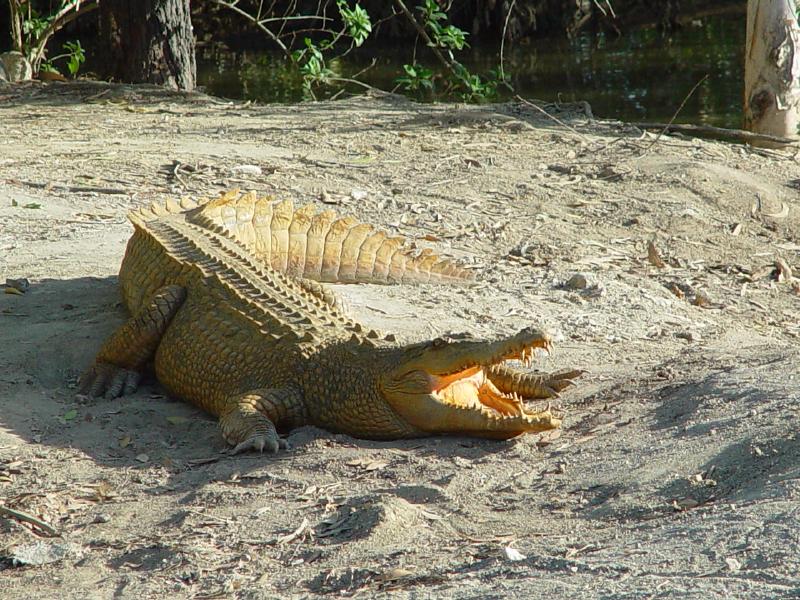|
|
 |
Sasan Gir - The Home to the Asiatic LIONS
|
 |

Gir
is the only place in the world outside Africa, where the Lion can be seen in its natural habitat. The last remaining Bastion
of the Asiatic Lion, Gir is also home to one of the largest Leopard populations in any park in India, making it an excellent place to see big cats of a different kind.
The Lion sanctuary project was initiated in 1972 to create a balance between the endangered
Lions and the indigenous Maldhari tribe. With over 800 guards patrolling the entire park, Gir has become one of the best-protected
sanctuaries in India.
No wonder that from 20 Lions at the
turn of the century there are now over 300 lions at Gir. This makes your chances of sighting a Lion very high.
Apart from spotting a Colourful array of birds, Gir is also a
great place to interact with local tribes. The main tribe is a nomadic pastoral community called Maldhari, who live in scattered
settlements called 'nesses'. Gir is also home to a Negroid community known as Siddis, who are African in origin but speak
Gujarati. The park is open from mid October and a Lion Safari by jeep showcases the diverse habitat of Gir.
Gir has some of the largest Panthers. Other wildlife to look
out for are the Four-Horned Antelope (the only four-horned ungulate in the world), Indian Gazelle (Chinkara), Spotted Deer
(Chital), Blue Bull (Nilgai), Wild Boar, Wolf, Hyena, Jackal,
Jungle Cat, Hare and other mammals found in the forest.
The Kamleshwar dam in the middle of the sanctuary is home to a record population of marsh crocodiles. Interesting birds at
Gir are the Paradise Flycatcher, Grey Drongo, Grey & Painted Francolin, Painted Sandgrouse, Bush Quail, Crested Hawk Eagle,
Crested Serpent Eagle, Bonnelli's Eagle, Shikra Hawk, Sirkeer Cuckoo and White-necked Stork. The Lion safari offers a fair
cross-section of habitats and wildlife of Gir. Nearly 70% of the tropical dry deciduous forest is covered by old teak plantations.
 |
 |
|
|
 |
|
|
 |
|
|
|
 The
Gir Experience
As the rays of the setting sun, dip beyond the unending horizon, and darkness spreads
its flanks - a reverberating roar rips the stillness of the night. Yes, these are rumblings, which roll down the hills to
remind, yes you are in the company of great the Asiatic Lion whose panting can be heard over a Km. of forest.
Declared
as sanctuary in 1965, sprawling in an area of 1412 sq. Kms. Gir, with its dry deciduous forest, has a luxuriantly rich ecosystem-endowed
with floral and faunal plentitude. Understandably, then, identifying Gir with Lions only, would be unfair to other wild inhabitants
of this park. Because, occupying the same territory with equal claim, are 32 species of mammals, 28 species of reptiles, nearly
300 species of birds and innumerable species of insects. Glorifying the maxims of harmonious coexistence, is the motley assemblage
of Chital, Samber, Nilgai, Leopard, Hyaena etc. Not to mention, the numerous varieties of birds, whose sprightly hops, melodious
twittering-softly add to the sublime symphony which nature has orchestrated here.
Gir - a proud heritage possessed by the present
generation, is not merely a heaven of wildlife. It symbolizes history , that has witnessed the vicissitudes of nature, the
travails of wildlife development, the gradual recognition given to this nature's bestowal, and consequent emergence of conservation
ideology. Despite the onslaught of biotic disturbances and climatic hostilities, Gir - with its virginal identity, stands
as a testimony of nature's intrinsic self reviving power.
Gir promises to unfold before you the unexplored vistas
of wilderness and the splendour of wildlife, which is tranquil yet vibrant, serene yet colourful, silent yet communicative,
distracting and yet captivating.
It took a royal decline to an offer of a lion hunt and then nearly a whole of a hundred
years to pull the Asiatic Lion back from the brink of near extinction. Now that the species seems finally secure, the management
is faced with another paradox. Unaware of the awe they continue to inspire and retaliatory risks they face, the lion tends
to follow it's wild instincts and venture out of man-made boundaries and reach upto the waves of the Arabian sea.
The Asian Lion is amongst the rarest animals in the world and its best to visit
him in summer, where the trees are bare, the grass has withered and he's down at the watering holes to quench his thirst.
As you roam the sanctuary you'ed encounter the straight probing gaze of a Nilgai, the flighty stare of a Chital and if you're
lucky the stralthy menance of the Leapord or the gentle call of a Lioness to her cubs.
Only if man would make an attempt
to understand that! Perhaps, you would!
 Back to Home
** NOTE: DO NOTE THAT ALL CARE WILL BE TAKEN DURING THE TRIP FOR ALL GUESTS BUT WE WILL NOT HOLD
ANY RESPONSIBILITY FOR ANY MISHAPS / ACCIDENTS WHICH IF HAPPEN DURING THE DURATION OF THE TRIP.
No refund will be possible once payment is done.
Pugmarks - The Nature Club
Contact: Dr. Sameer: +91-93244-94247,
Mr. Chintan: +91-93222-17949
Email: pugmarksthenatureclub@gmail.com
 

|
|
|
 |

